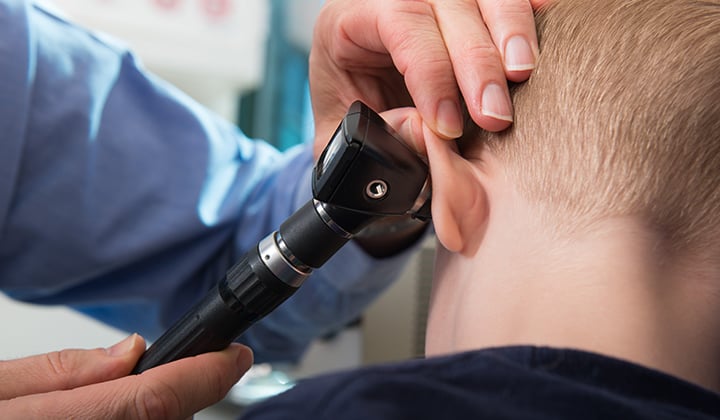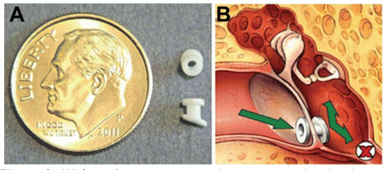Ear infections in children: What you can do and when it’s time for ear tubes

Ear infections are one of the most common medical issues among young children and can be frustrating for both parents and kids. As a parent, we know you want to do everything possible to keep your child healthy. Here’s what to know about ear infections and when to talk to your doctor about discussing ear tubes.
What are ear infections?
Ear infections are caused by a buildup of fluid or pus behind the eardrum. They are most common in young children and infants because of their Eustachian tubes – the tubes connecting the middle ear to the back of the nose – aren’t fully developed. These tubes are narrow, horizontal, and can easily be clogged with mucus or blocked by inflammation. We most commonly see ear infections in 1- to 4-year-old children, but ear infections can happen at any age.
Ear infections can be caused by:
- Bacteria
- Viruses like getting a cold
Some things that may contribute to ear infections include:
- Tobacco smoke exposure
- Allergies
- Germs from populated places, like a daycare
- Facial abnormalities, like a cleft palate
- Family history of ear infections
Signs of an ear infection
When an ear infection happens in a young child, it’s hard to know what’s going on. Some children are too young to talk or say what’s bothering them, but you can watch for signs of an ear infection that might include:
- Irritability or crying
- Ear pain
- Low grade fever – between 99.5- and 100.3-degrees Fahrenheit
- Eating less
- Headache
- Hearing/listening less than normal
- Throwing up or diarrhea
- Trouble sleeping
- Tugging at ears
If you notice any of these symptoms, it can be time to visit your child’s primary care provider for help.
How to prevent ear infections
It’s not always possible to prevent ear infections. Avoiding tobacco smoke exposure is important and washing your hands can help stop the spread of germs that cause ear infections.
If your child is having recurrent ear infections or has fluid in the eardrum that doesn’t go away, you may be a candidate for ear tubes. Chronic ear infections or fluid could cause hearing loss and speech delays.
What would be defined as recurrent ear infections are:
- 4 ear infections in 12 months, or
- 3 ear infections in 6 months
What are ear tubes?
Ear tubes are plastic or metal cylinders that are put into the eardrum by an ear, nose and throat surgeon (otolaryngologist). Ear tubes help relieve pressure in the ear and help with drainage, which helps lessen the chance of an ear infection. Ear tubes are temporary and usually fall out on their own after about 12-18 months.

Ear tubes next to a dime and an illustration of an ear tube in an eardrum. Photo provided by the American Academy of Otolaryngology-Head and Neck Surgery Foundation.
While it is still possible to get an ear infection after having ear tubes, the benefit is that you can treat the ear infection with antibiotic ear drops instead of antibiotics by mouth which could cause diarrhea and diaper rash.
What is ear tube surgery like?
Ear tube surgery is quick with the procedure taking around 10 minutes. The child is put under anesthesia – put asleep with medication so they don’t feel anything – then a surgeon makes a small cut in the eardrum, removes any fluid in the ear, and places the ear tube in the eardrum. It is then done again on the other ear. The child can most likely go home the same day.
Most kids see an improvement in their hearing and have fewer ear infections after the surgery. Life after ear tubes is the same. You can still bathe and swim like normal after ear tubes, but swimming in dirty water or water that is deeper than 2 or 3 feet is not recommended without ear protection.
If your child is suffering from ear pain, ear tubes may be a big help. Talk with your child’s pediatrician to see if ear tubes are right for your child.
Related article:
